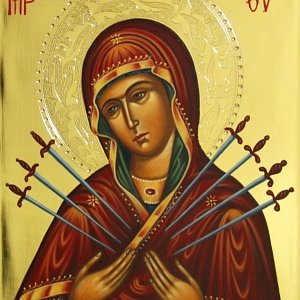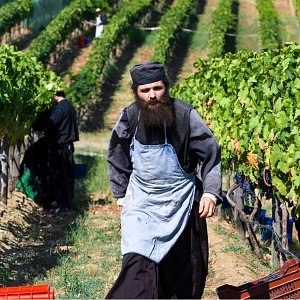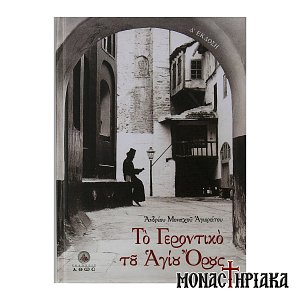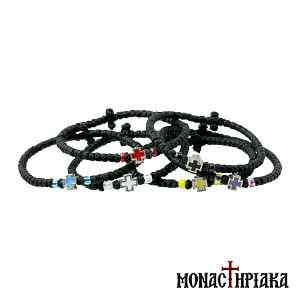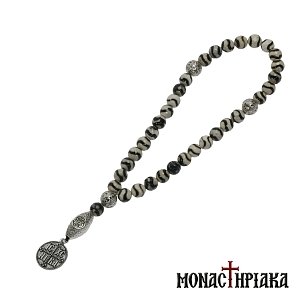Blessed Elder Archimandrite Philotheos Zervakos of Longovarda (1884-1980) is a well-known 20th-century Greek Orthodox elder, from Paros island, and spiritual son of St. Nektarios of Aegina. He was imprisoned twice by the Turks during the final years of the Ottoman occupation of Thessaloniki. Although he has not been glorified he is considered a saint in Greece.
Blessed Elder Archimandrite Philotheos (Zervakos) was born in the small and remote village of Pakia in Sparti, Peloponesse, Greece, in the year 1884 and was given the name of Constantine at his baptism. From childhood he demonstrated an exceptional love for God.
He was 18 years old, when he was inspired by the 54th Psalm to follow the monastic life. He departed from his paternal home with neither shoes or any possessions; he only had his tunic and a small gospel. In 1912, April 22, Father Philotheos was ordained to the priesthood by Metropolitan Gabriel of Trifilia and Olympia. In 1924, he made an extensive pilgrimage to the Holy Land and Egypt. This is all described in his book published in 1925, Great and Wondrous Pilgrimages to Palestine and Sinai.

In 1930, Elder Ierotheos reposed, and Fr. Philotheos succeeded him as abbot of Longovarda. By this stage, Fr. Philotheos had the reputation of a saint. In 1934, he made another pilgrimage, this time to Constantinople. He returned to Greece and founded the convent of Panagia Myrtidiotissa Thapsanon (The Virgin of the Myrtle Tree), 4 km from Lefkes on the island of Paros, Greece.
Throughout his life, the Elder preaches the word of God and heard confessions for 68 years (1912 to 1978). During this time, he visited the islands of Paros, Antiparos, Naxos, Amorgos, Thera, Syros, Tinos, Andros, Sifnos, Patmos, Rhodes, Chios, Mytilene, Aegina, Hydra, Cyprus, Kefallinia, Zakynthos, Evoia, Skiathos, Prigippos. He also visited over 54 cities and towns throughout Greece, including Athens, Sparta, Corinth, Thessaloniki and internationally including Alexandria, Cairo, Constantinople, Suez etc.
During his life, he built 12 churches, two monasteries, three cemeteries and two schools. The money he would receive from the faithful he would distribute to the poor, the widows and the orphans.
On the morning of May 8, 1980, the blessed Elder Philotheos died in his cell at Thapsana, Paros. His funeral was conducted by Archimandrite Dionysios of Simonopetra Monastery of Mt. Athos. His relics were laid to rest at the convent in Paros, in a place that he chose beside the chapel dedicated to his spiritual mentor, St. Nectarios of Aegina.



